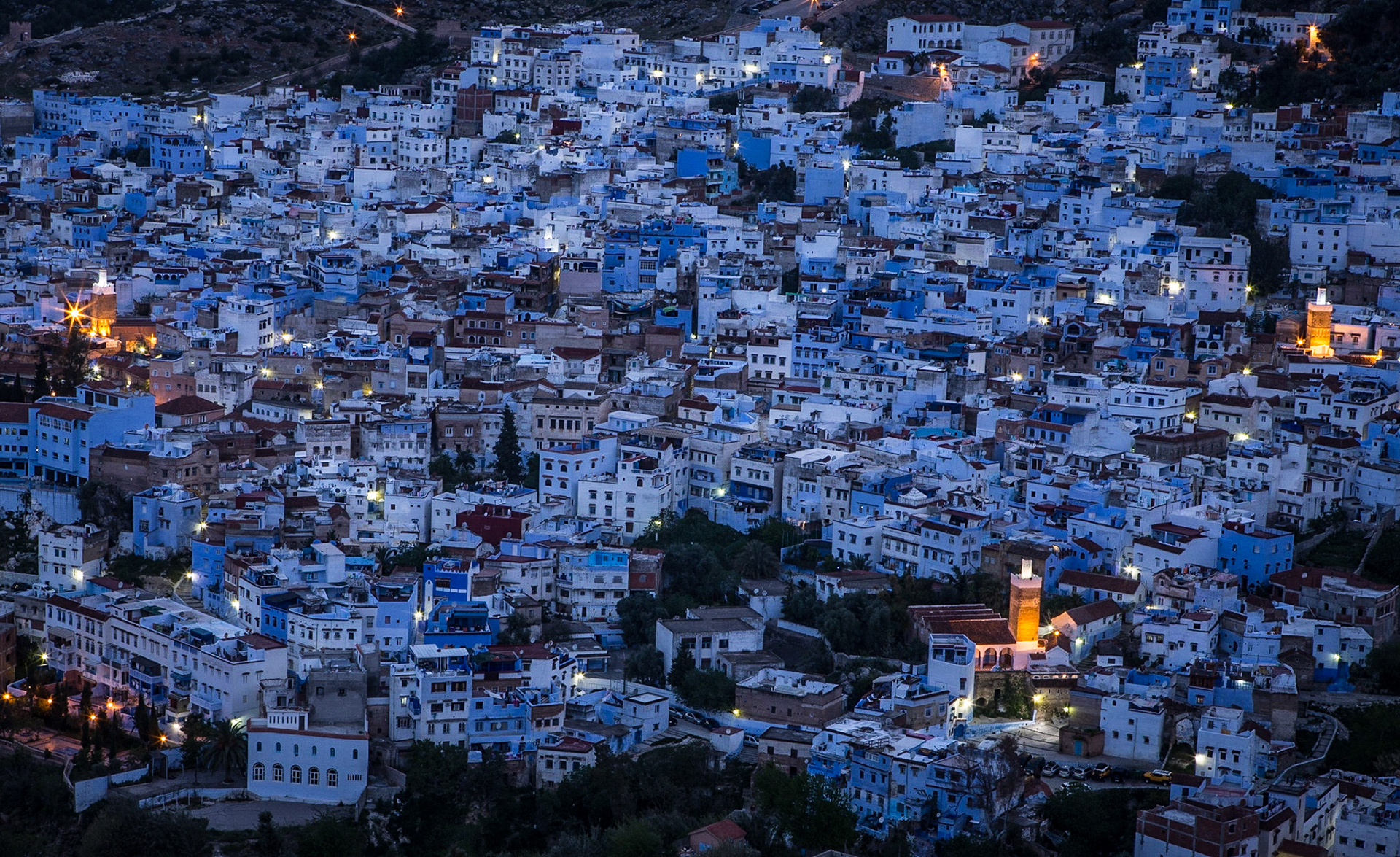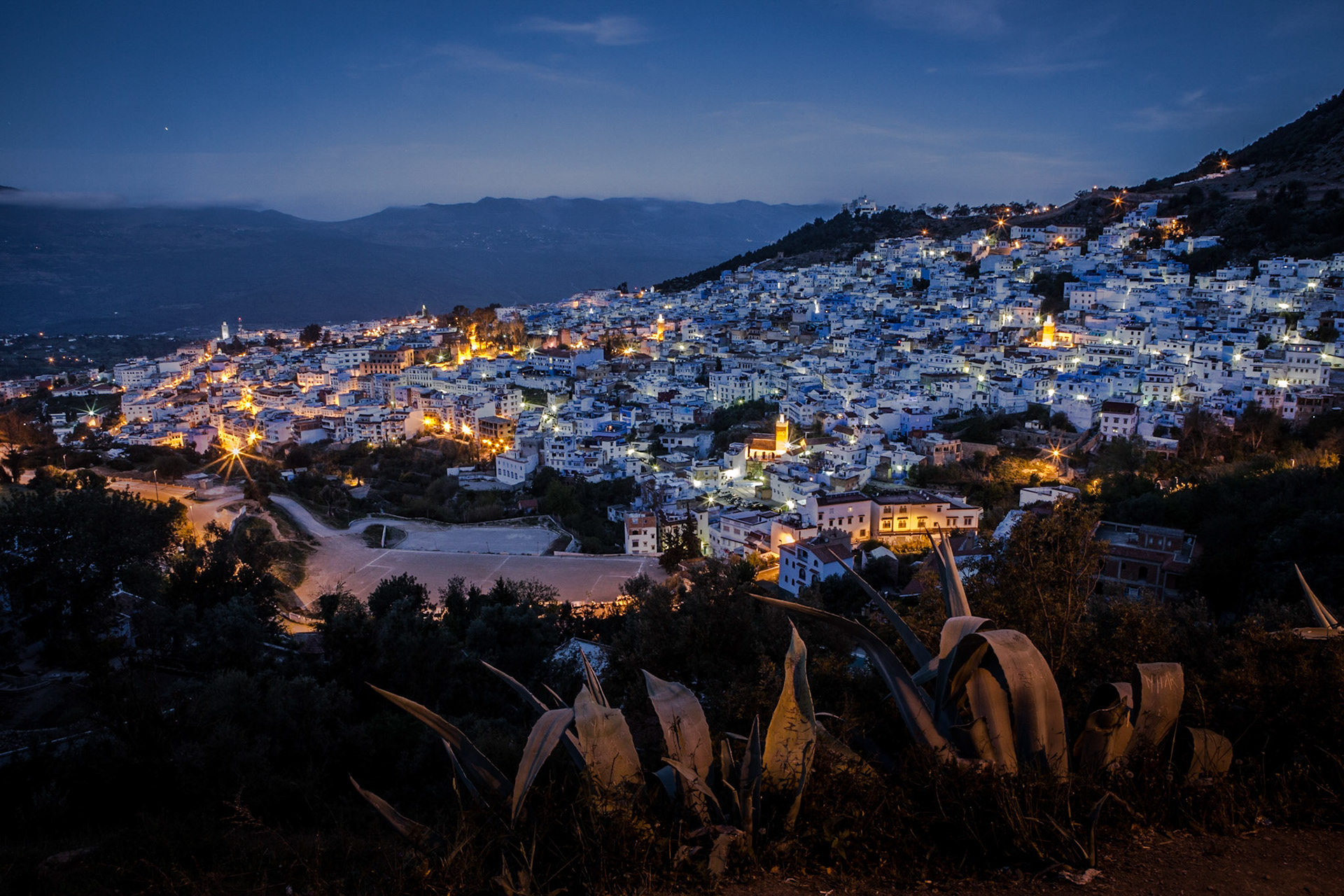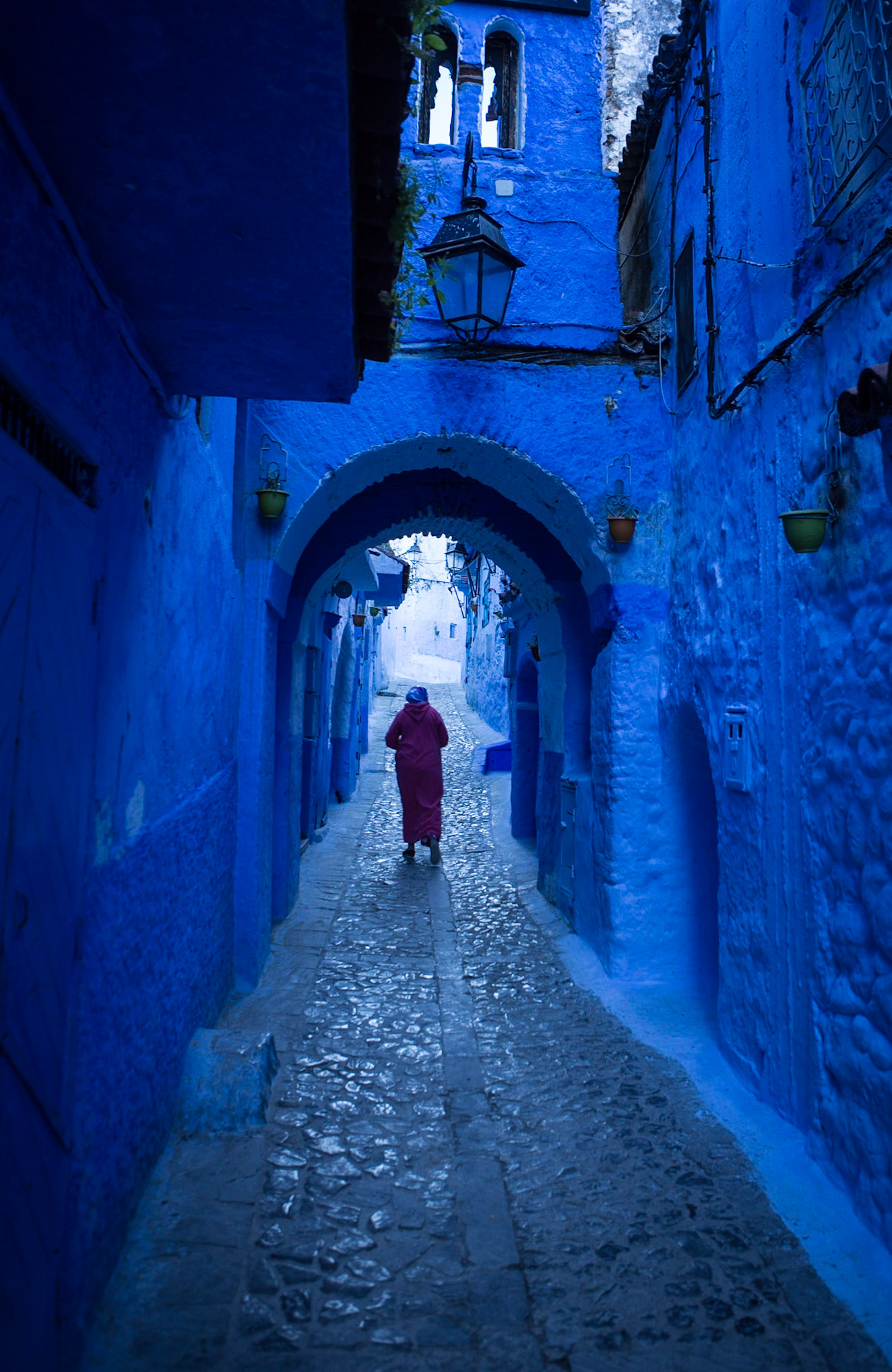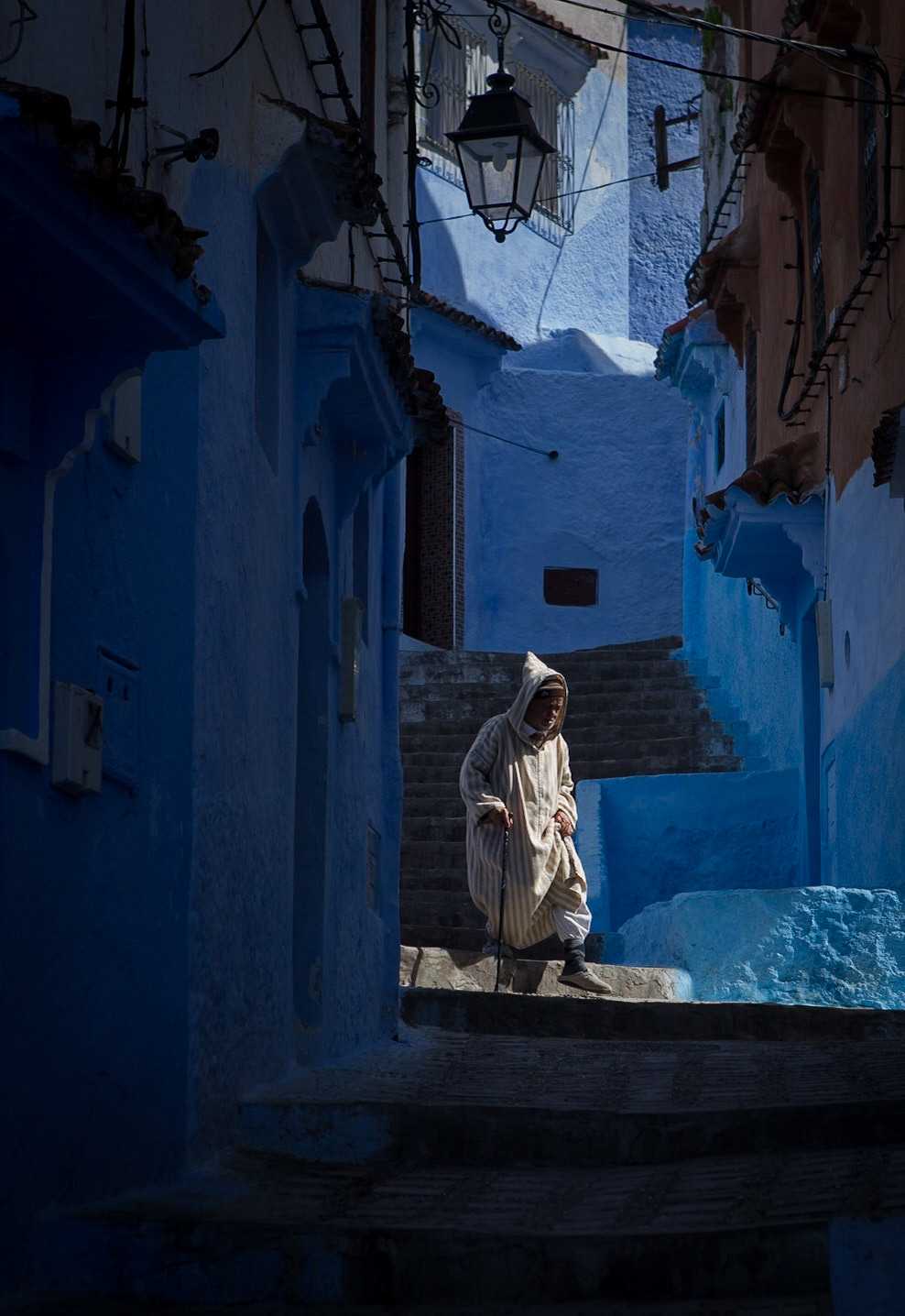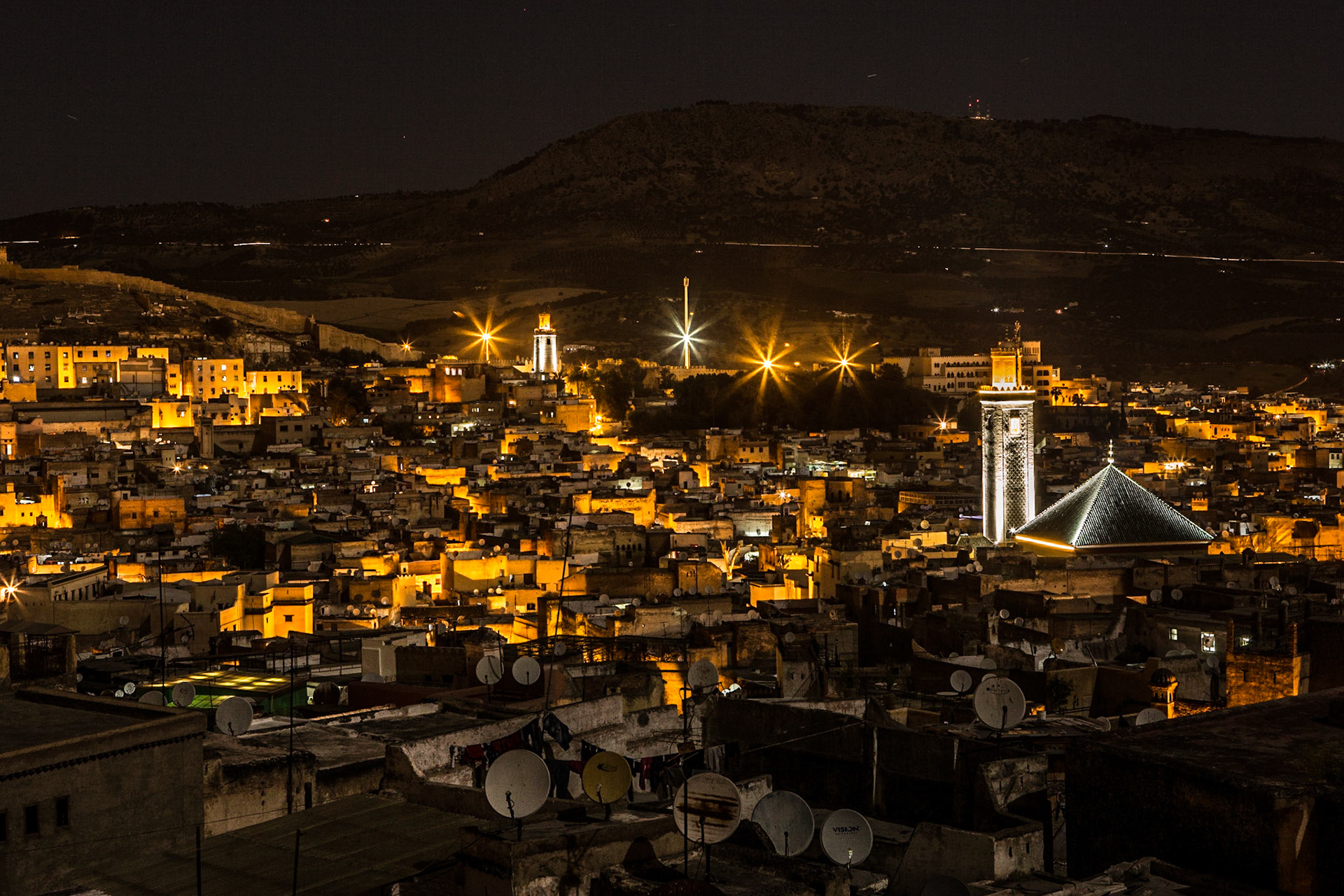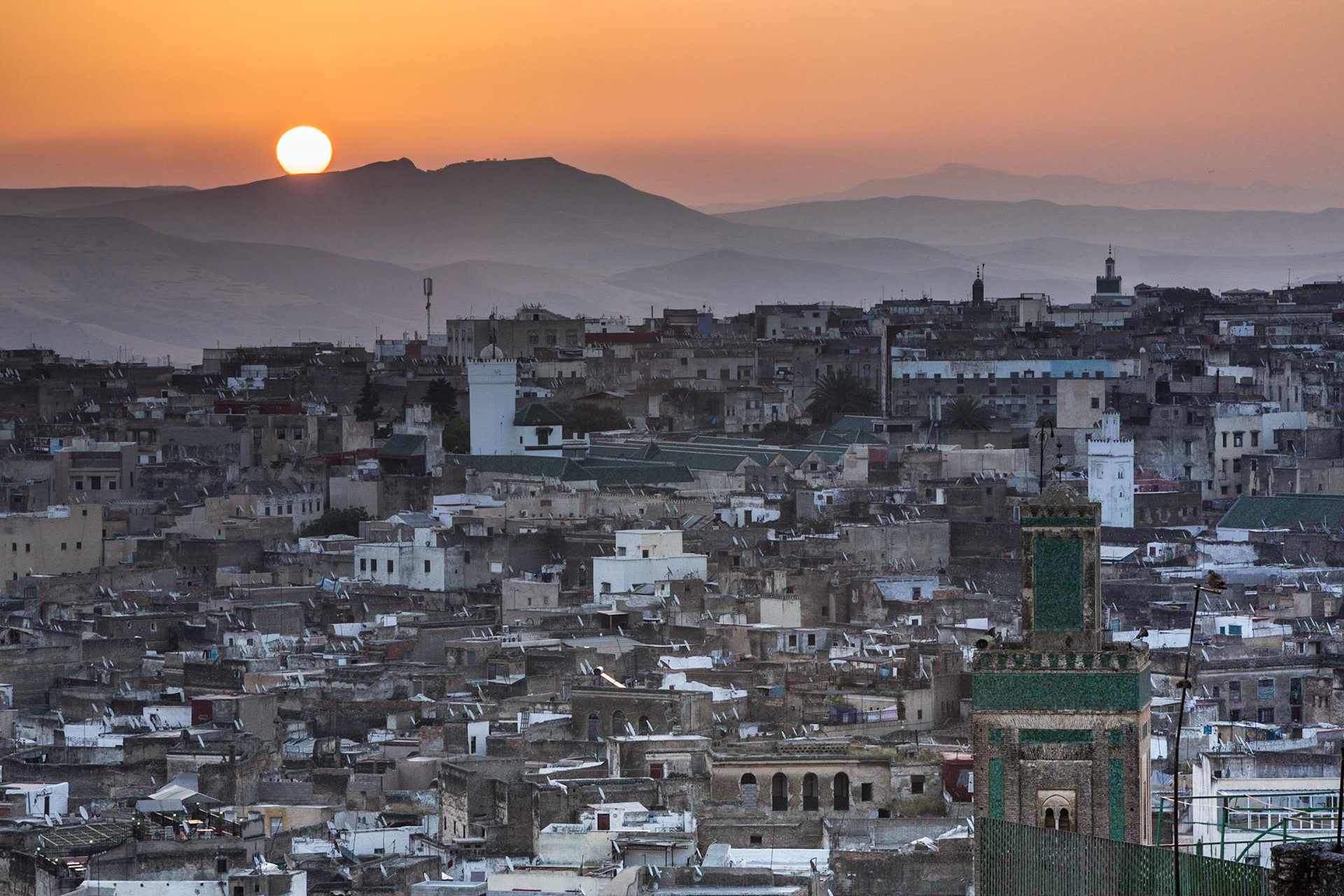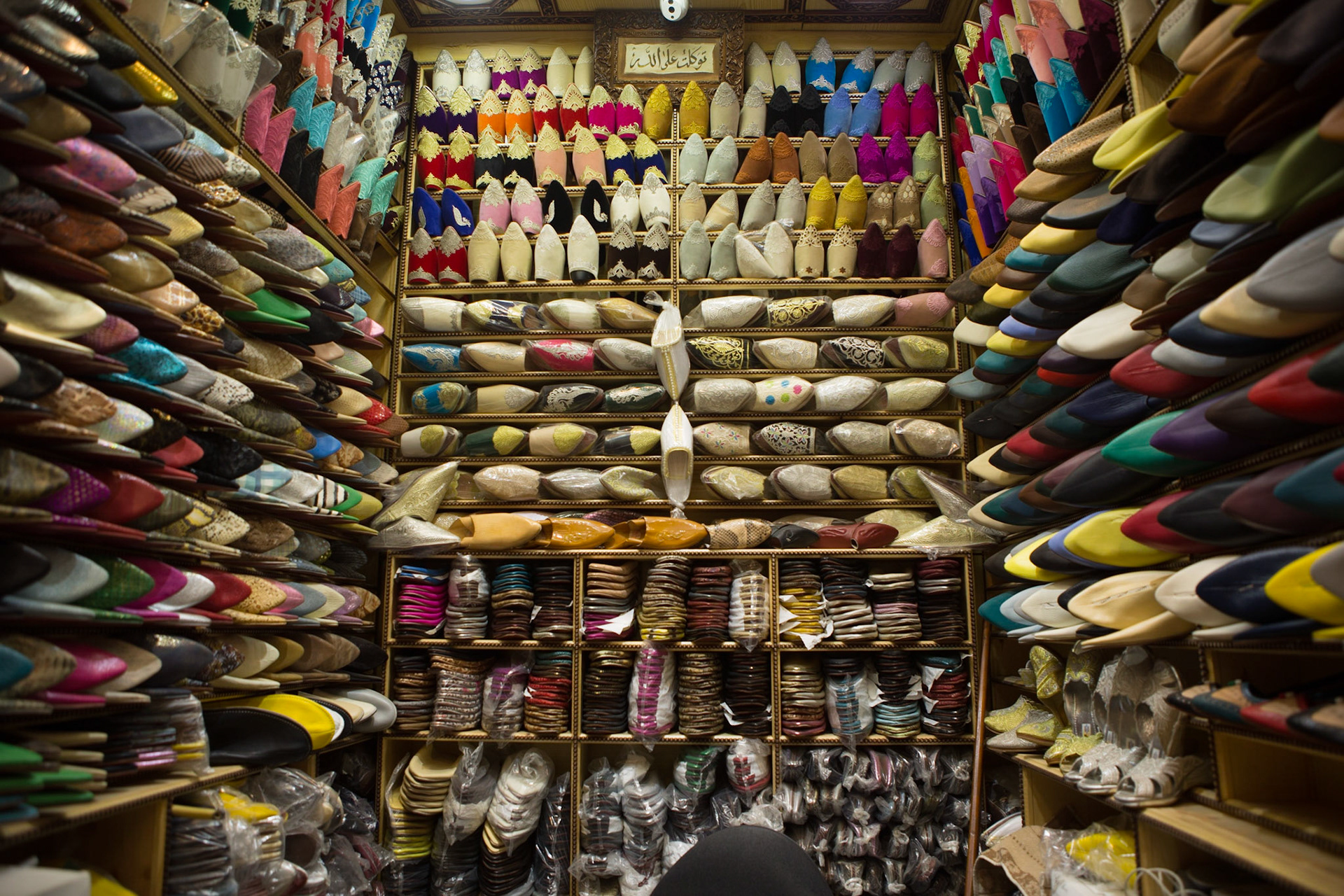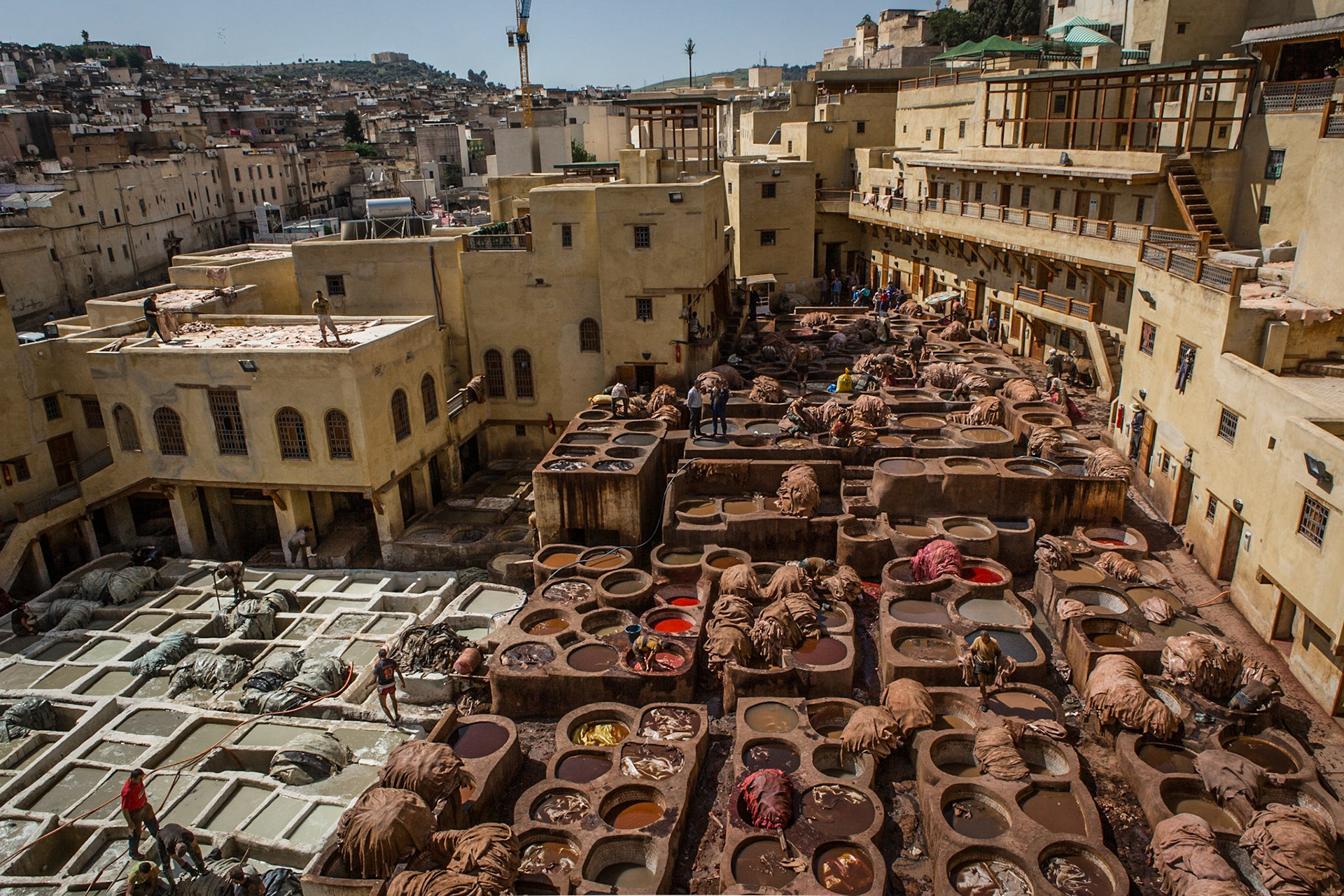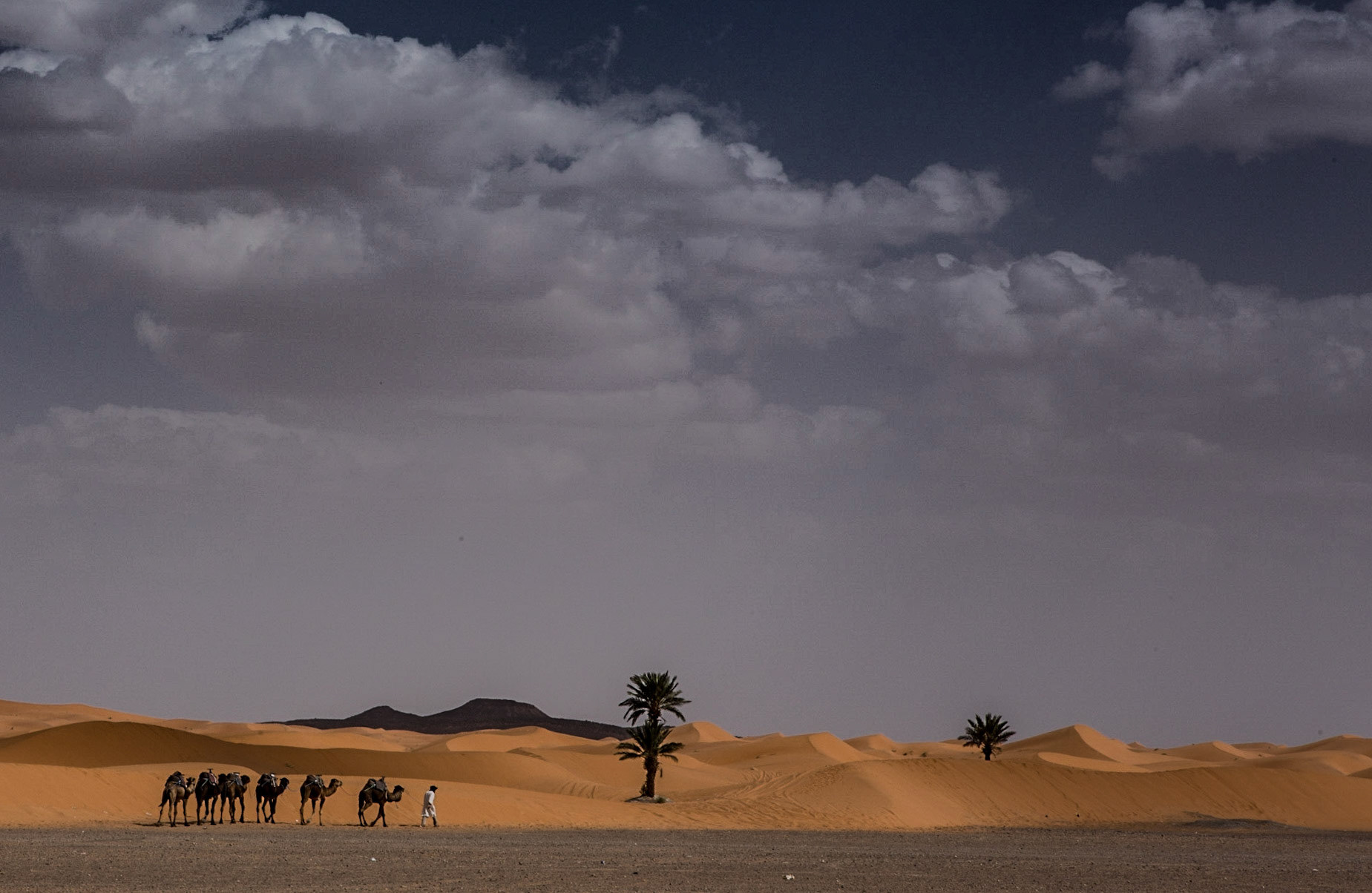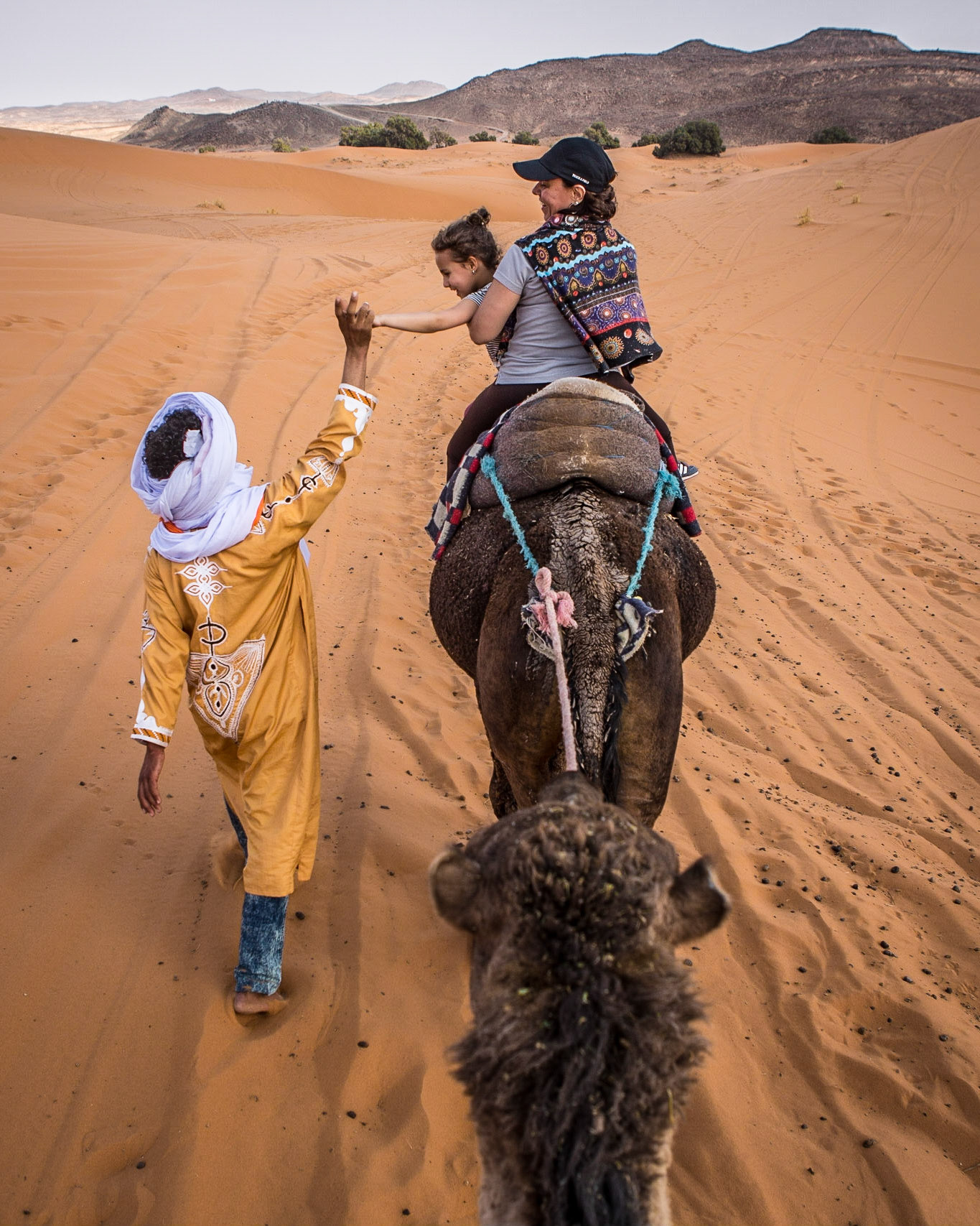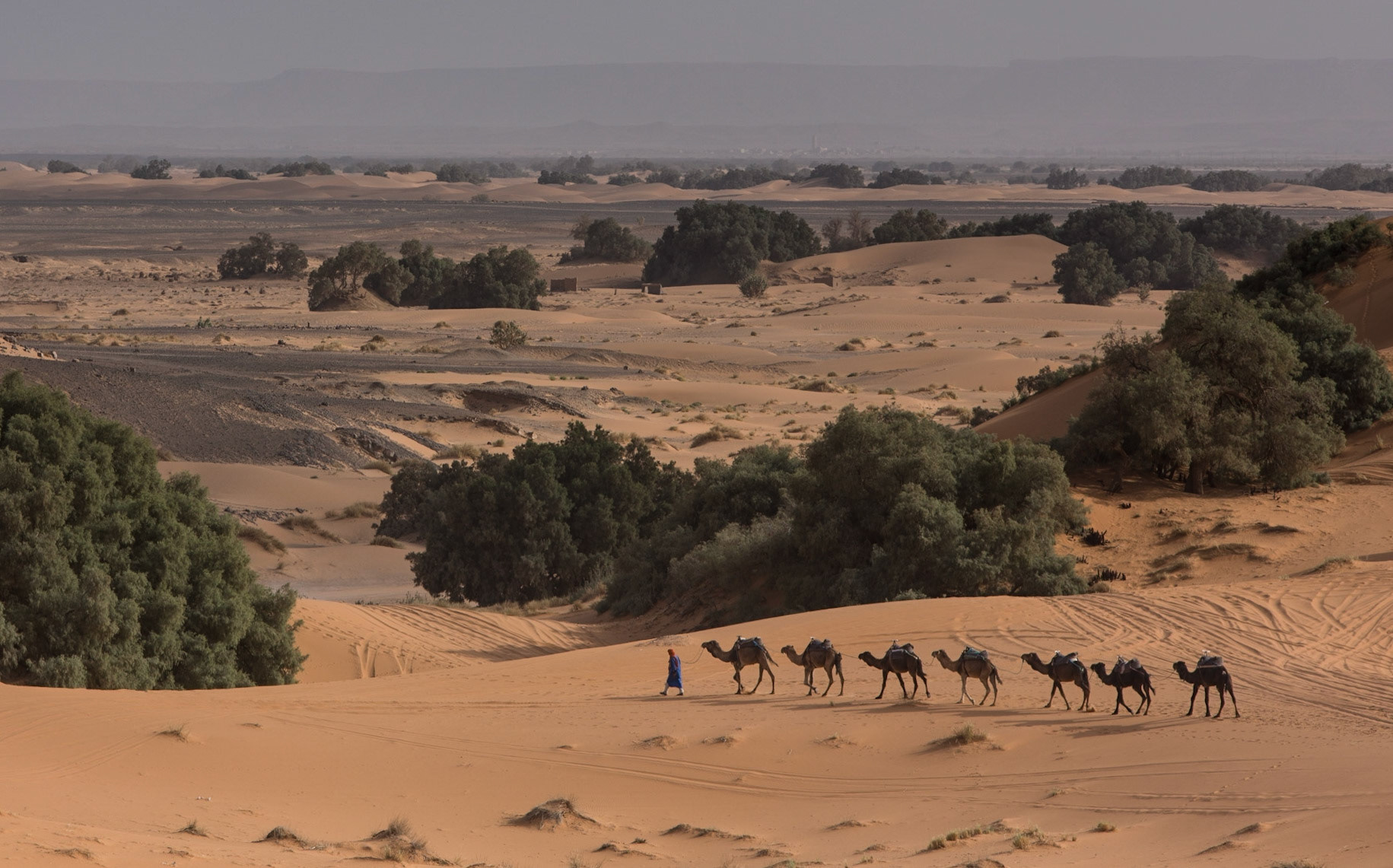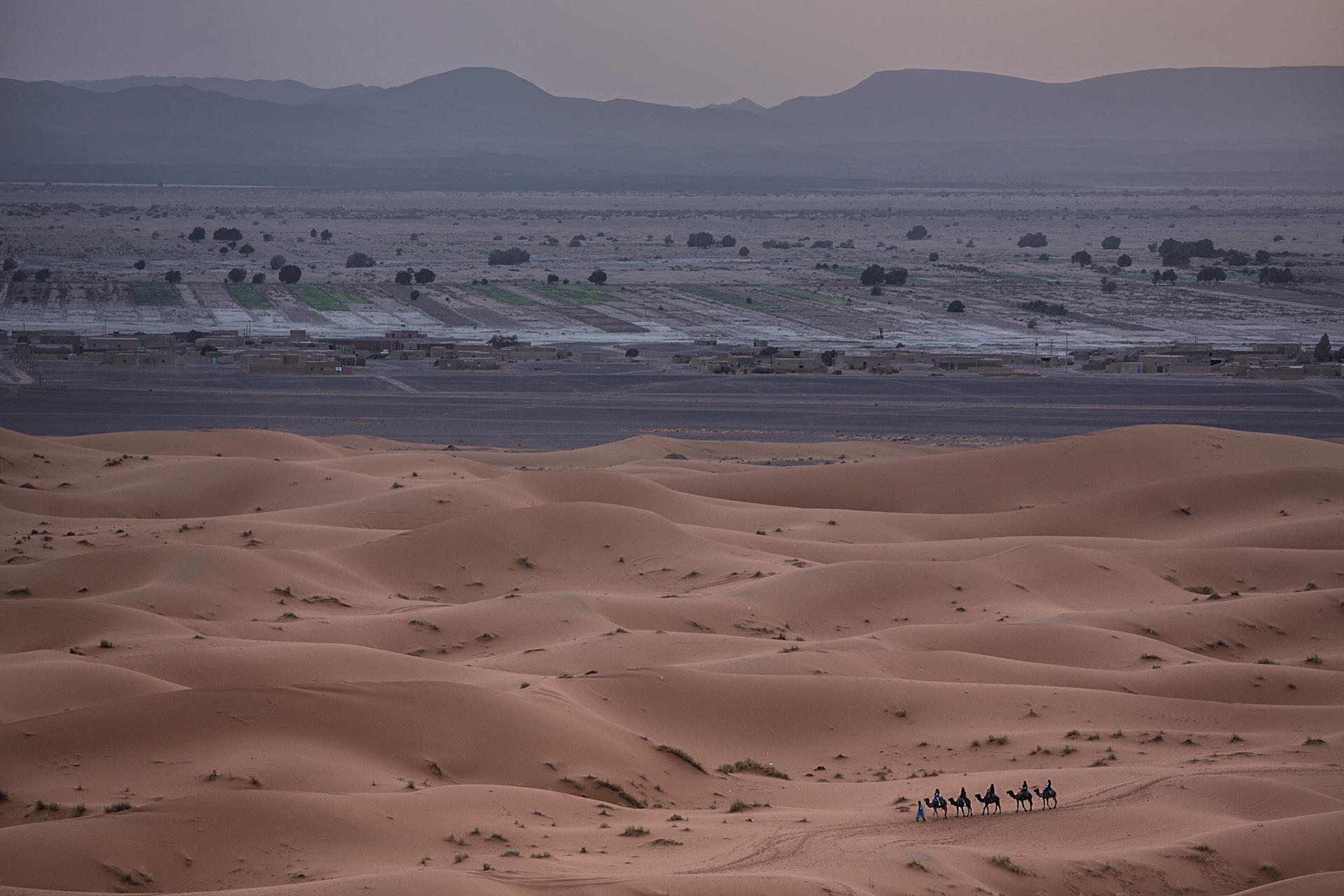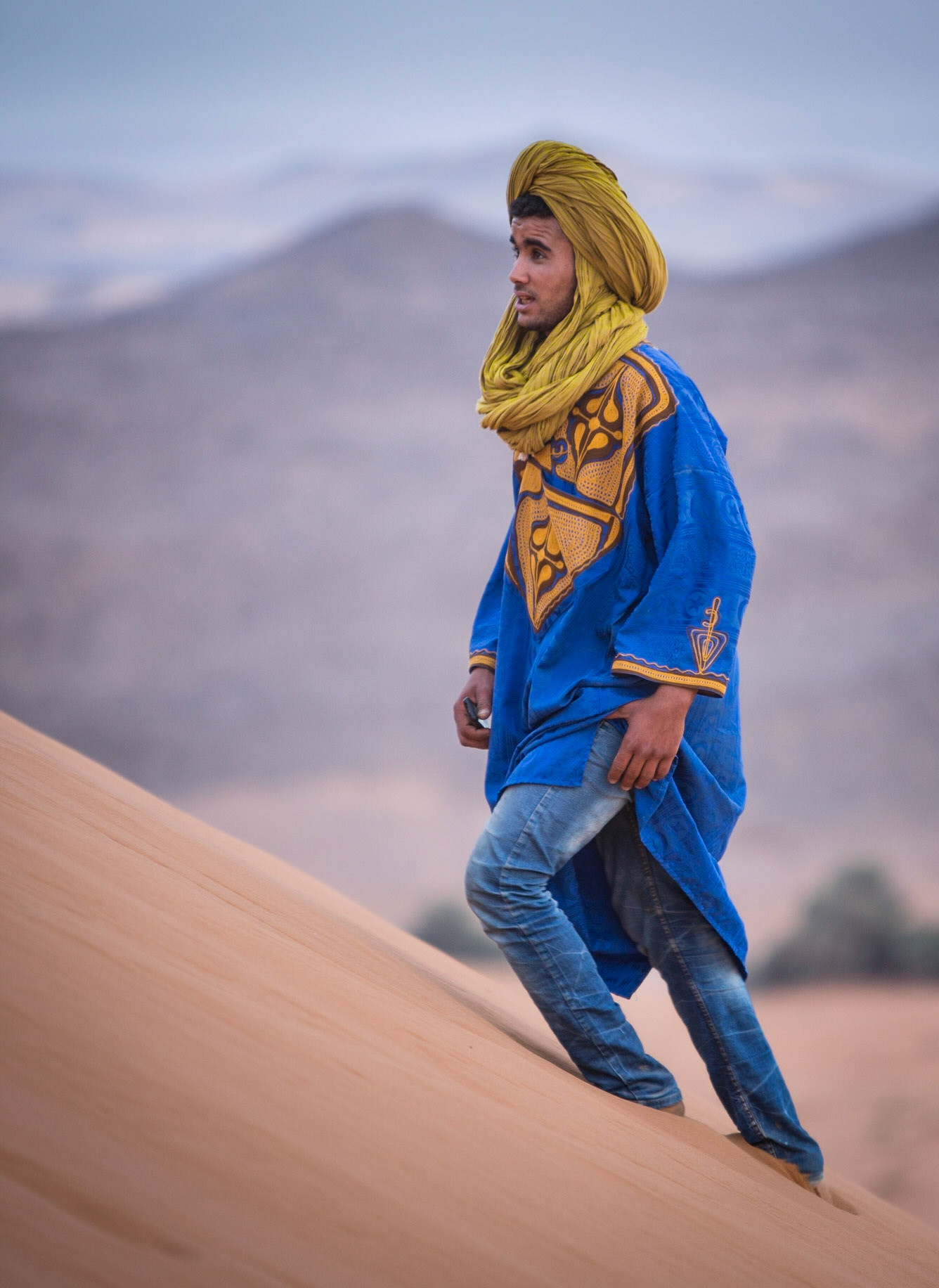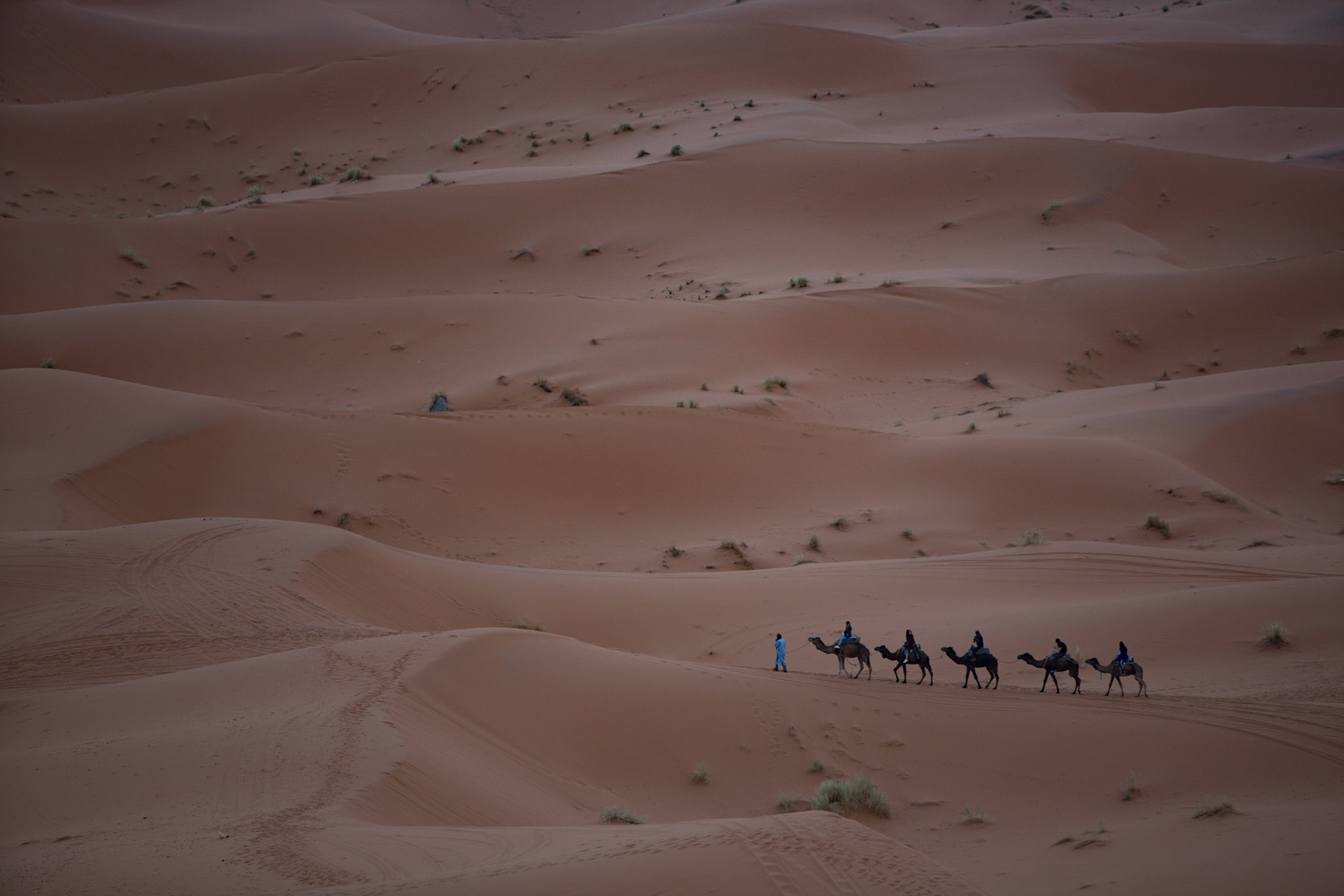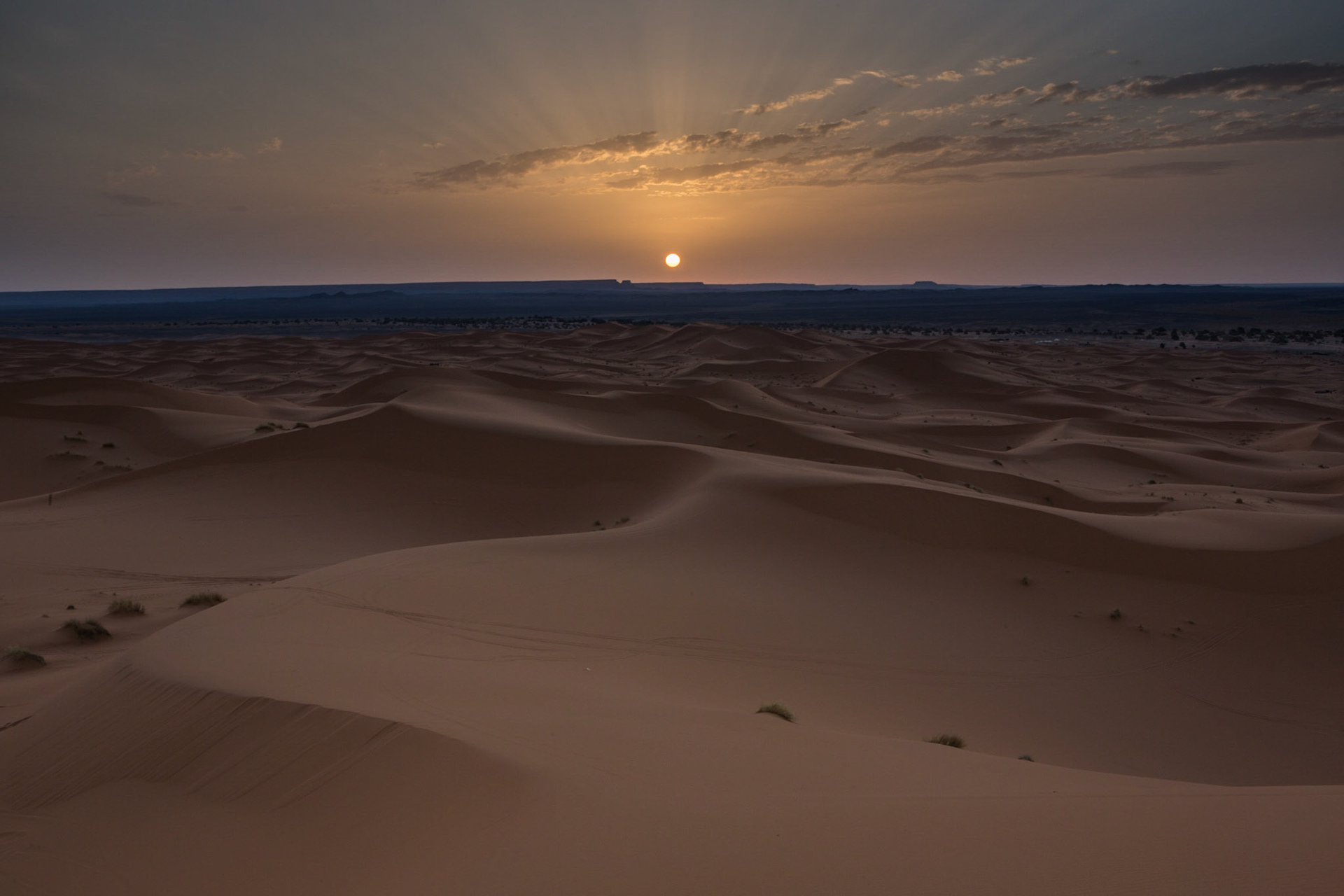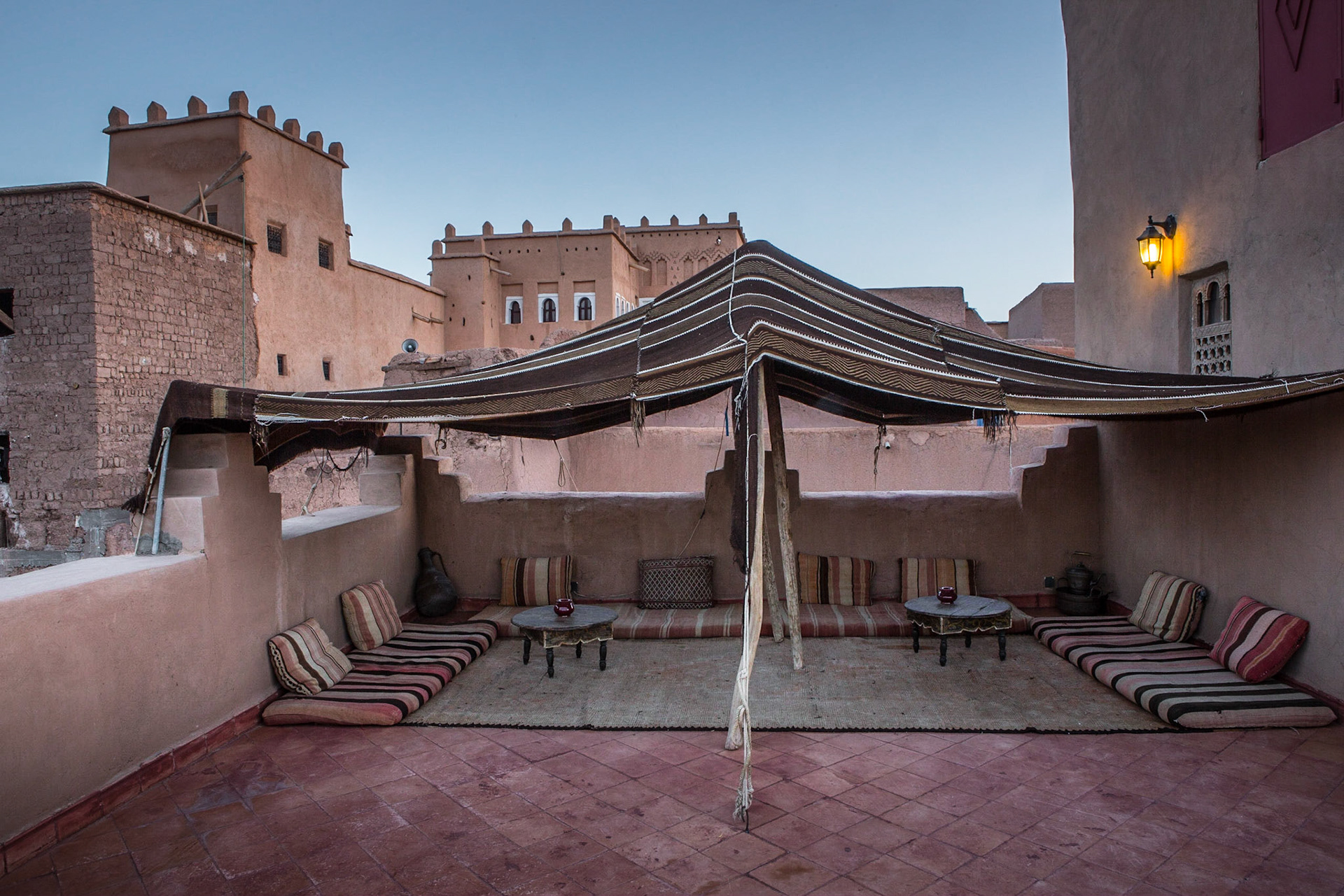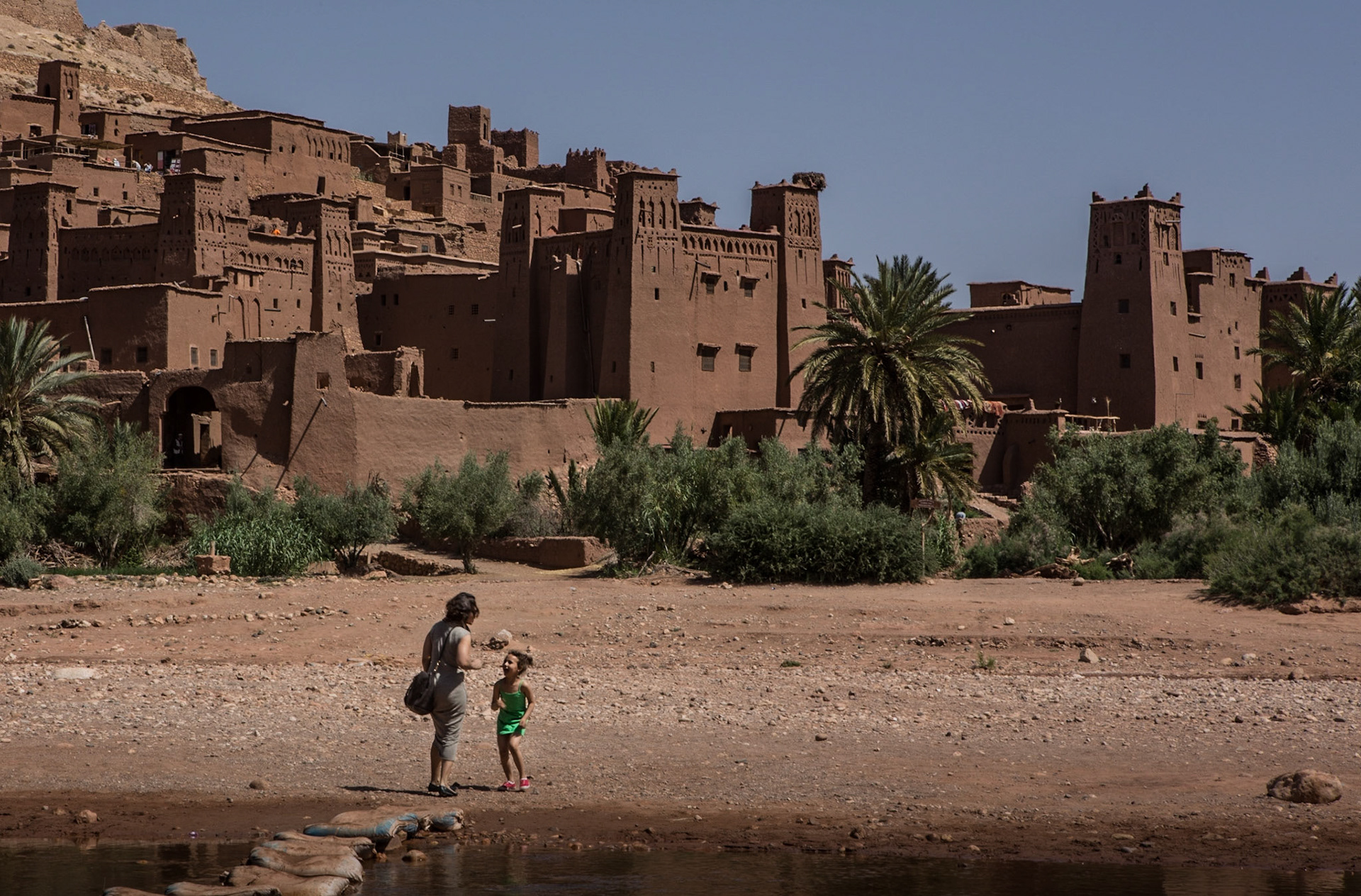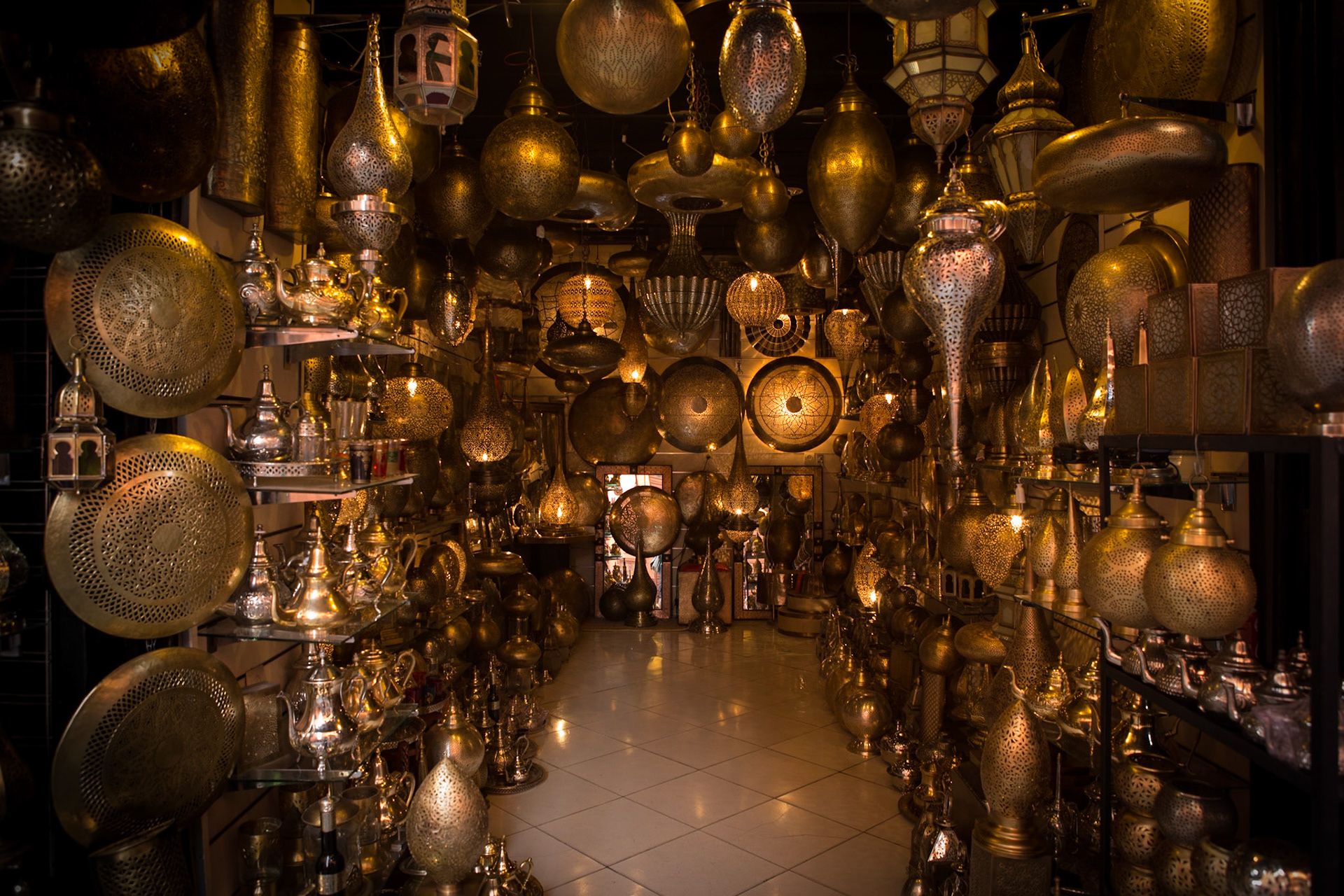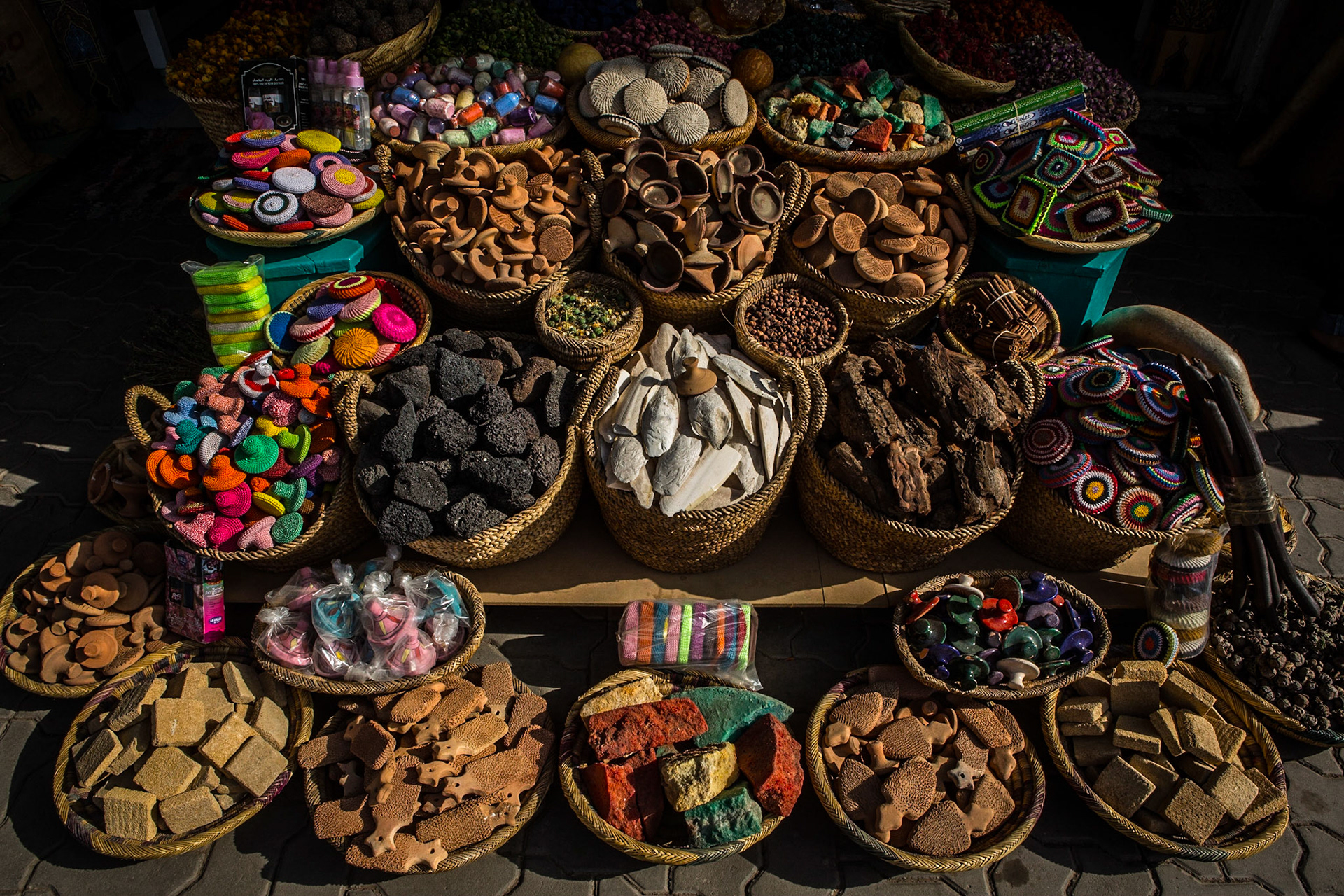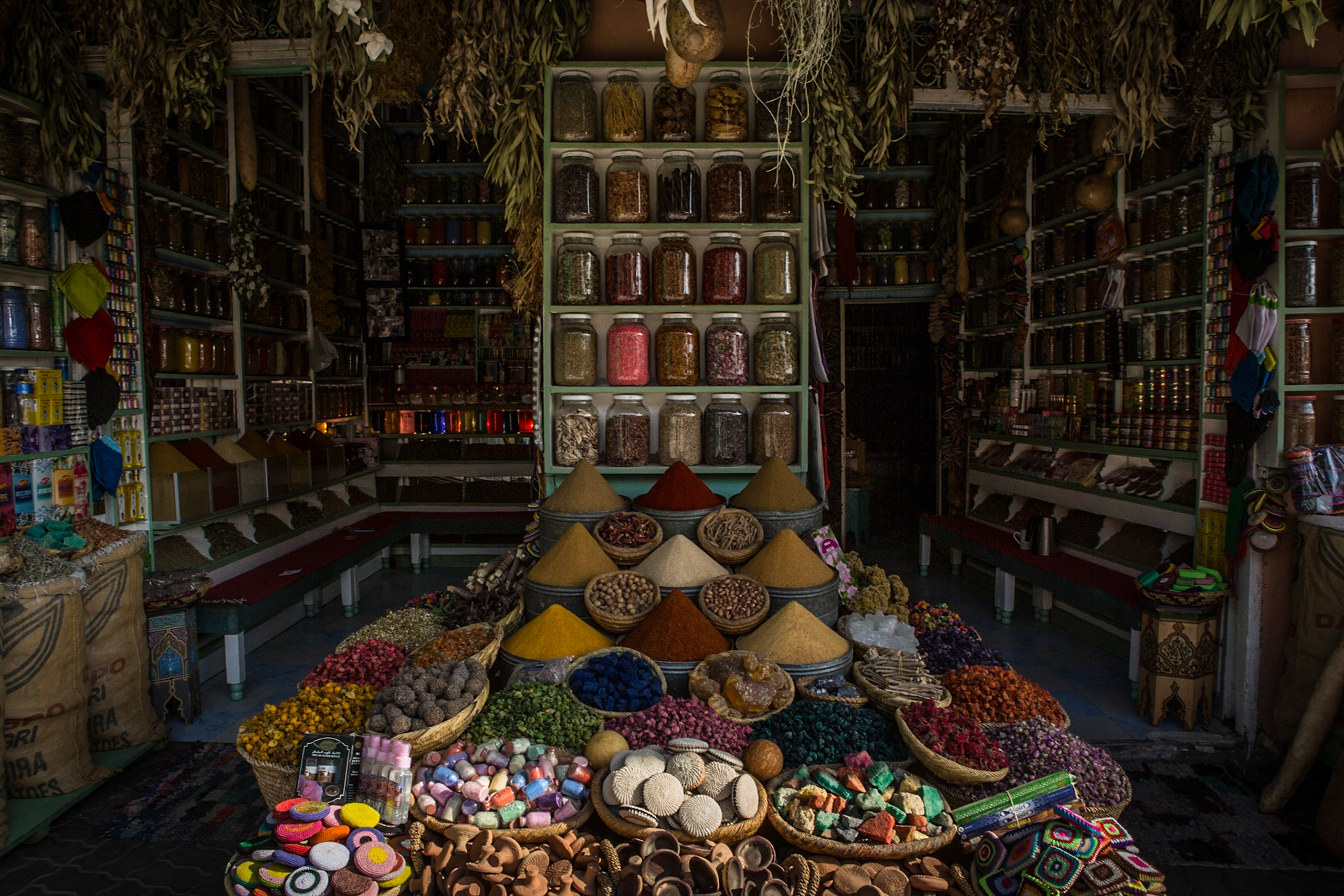
Chefchaouen or Chaouen is a city in northwest Morocco. It is situated in the Rif Mountains and is noted for its buildings in shades of blue. Chefchaouen's blue walls are a popular subject of interest. There are several theories as to why the walls were painted blue. One popular theory is that the blue keeps mosquitos away, another is that Jews introduced the blue when they took refuge from Hitler in the 1930s. The blue is said to symbolize the sky and heaven, and serve as a reminder to lead a spiritual life

Chefchaouen or Chaouen is a city in northwest Morocco. It is situated in the Rif Mountains and is noted for its buildings in shades of blue. Chefchaouen's blue walls are a popular subject of interest. There are several theories as to why the walls were painted blue. One popular theory is that the blue keeps mosquitos away, another is that Jews introduced the blue when they took refuge from Hitler in the 1930s. The blue is said to symbolize the sky and heaven, and serve as a reminder to lead a spiritual life

Chefchaouen or Chaouen is a city in northwest Morocco. It is situated in the Rif Mountains and is noted for its buildings in shades of blue. Chefchaouen's blue walls are a popular subject of interest. There are several theories as to why the walls were painted blue. One popular theory is that the blue keeps mosquitos away, another is that Jews introduced the blue when they took refuge from Hitler in the 1930s. The blue is said to symbolize the sky and heaven, and serve as a reminder to lead a spiritual life.

Chefchaouen or Chaouen is a city in northwest Morocco. It is situated in the Rif Mountains and is noted for its buildings in shades of blue. Chefchaouen's blue walls are a popular subject of interest. There are several theories as to why the walls were painted blue. One popular theory is that the blue keeps mosquitos away, another is that Jews introduced the blue when they took refuge from Hitler in the 1930s. The blue is said to symbolize the sky and heaven, and serve as a reminder to lead a spiritual life.

Fez is the third largest city of Morocco, after Casablanca and Rabat.Fez was the capital city of modern Morocco until 1925. It is listed as a World Heritage Site and is believed to be one of the world's largest urban pedestrian zones (car-free areas) with more than 8,000 small streets in the medina) old town). This shot was taken at night from the rooftop of a Riad located at the heart of the medina.

Fez is the third largest city of Morocco, after Casablanca and Rabat.Fez was the capital city of modern Morocco until 1925. It is listed as a World Heritage Site and is believed to be one of the world's largest urban pedestrian zones (car-free areas) with more than 8,000 small streets in the medina) old town). This shot was taken at sunrise from the rooftop of a Riad located at the heart of the medina.

Moorish slippers shop at the medina (old town) in Fez. Fez is the third largest city of Morocco, after Casablanca and Rabat and was the capital city of modern Morocco until 1925. It is listed as a World Heritage Site and is believed to be one of the world's largest urban pedestrian zones (car-free areas) with more than 8,000 small streets in the medina.

Chouara Tannery is one of the three tanneries in the city of Fez, Morocco. It was built in the 11th century and it is the largest tannery in the city. From its inception, the tanning industry in Fez has been continually operating in the same fashion as it did in the early centuries. Today, tanning is considered one of the main tourist attractions. The tanneries are packed with the round stone vessels filled with dye or white liquids for softening the hides. The leather goods produced in the tanneries are exported around the world.

Merzouga is a small village in southeastern Morocco, about 35 kilometres southeast of Rissani, about 55 kilometers from Erfoud, and about 50 kilometers from the Algerian border.The village is known for its proximity to Erg Chebbi, a Saharan broad, flat area of desert covered with wind-swept sand with little or no vegetative cover.

Merzouga is a small village in southeastern Morocco, about 55 kilometers from Erfoud, and about 50 kilometers from the Algerian border.The village is known for its proximity to Erg Chebbi, a Saharan broad, flat area of desert covered with wind-swept sand with little or no vegetative cover. It is a true delight to ride a dromedary in this area with the friendly Berber inhabitants.

Merzouga is a small village in southeastern Morocco, about 35 kilometres southeast of Rissani, about 55 kilometers from Erfoud, and about 50 kilometers from the Algerian border.The village is known for its proximity to Erg Chebbi, a Saharan broad, flat area of desert covered with wind-swept sand with little or no vegetative cover.

Merzouga is a small village in southeastern Morocco, about 55 kilometers from Erfoud, and about 50 kilometers from the Algerian border.The village is known for its proximity to Erg Chebbi, a Saharan broad area of desert covered with wind-swept sand with little or no vegetative cover. It is a true delight to ride a dromedary in this area or watch others do it from the top of the highest dune just before sunset.

Merzouga is a small village in southeastern Morocco, about 55 kilometers from Erfoud, and about 50 kilometers from the Algerian border.The village is known for its proximity to Erg Chebbi, a Saharan broad area of desert covered with wind-swept sand. It is a true delight to climb to the top of the highest dune to watch the sunset, among the friendly Berbers and other travelers.

Merzouga is a small village in southeastern Morocco, about 55 kilometers from Erfoud, and about 50 kilometers from the Algerian border.The village is known for its proximity to Erg Chebbi, a Saharan broad area of desert covered with wind-swept sand. It is a true delight to climb to the top of the highest dune to watch the sunset, among the friendly Berbers and other travelers.

Merzouga is a small village in southeastern Morocco, about 35 kilometres southeast of Rissani, about 55 kilometers from Erfoud, and about 50 kilometers from the Algerian border.The village is known for its proximity to Erg Chebbi, a Saharan broad, flat area of desert covered with wind-swept sand with little or no vegetative cover.

Taourirt Kasbah, Ouarzazate, Morocco, is a 19th century a citadel set against the backdrop of the Atlas Mountains.

Aït Benhaddou is a fortified village (ksar in Arabic), along the former caravan route between the Sahara and Marrakech in present-day Morocco. Most citizens attracted by the tourist trade live in more modern dwellings in a village on the other side of the river, although there are four families still living in the ancient village. Inside the walls of the ksar are half a dozen Kasbahs or merchants houses which constitute a great example of Moroccan earthen clay architecture.Aït Benhaddou is a UNESCO World Heritage Site since 1987 and several films have been shot there, including Gladiator and the TV series Game of Thrones.We had a blast with our daughter wandering around this iconic location.

Artisan shop in the medina (old town) in Marrakesh. Marrakesh has the largest traditional market (souk) in Morocco, with some 18 souks selling wares ranging from traditional Berber carpets to modern consumer electronics.

Spices shop at Place des Epices in the medina (old town) in Marrakesh. Marrakesh has the largest traditional market (souk) in Morocco, with some 18 souks selling wares ranging from traditional Berber carpets to modern consumer electronics.

Spices shop at Place des Epices in the medina (old town) in Marrakesh. Marrakesh has the largest traditional market (souk) in Morocco, with some 18 souks selling wares ranging from traditional Berber carpets to modern consumer electronics.
